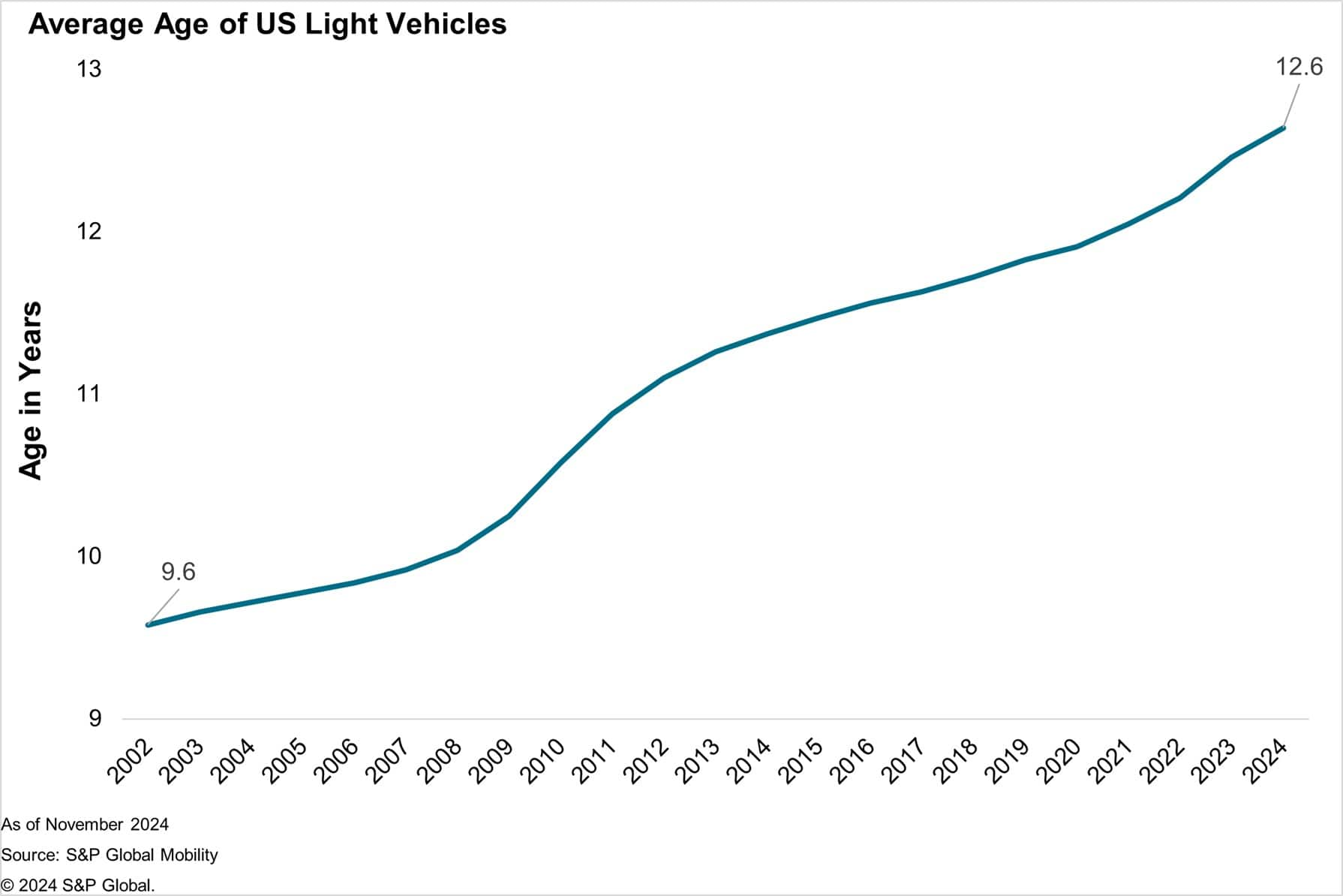By: Jason Jordhamo, Product Management Director, S&P Global
Mobility
In this November issue of the
Polk Automotive Marketing Monitor, we dive into the service
bays; Vehicles on the road continue to get older and rack up miles
while new launches rolling into lots are laden with new systems,
semiconductors, and software. For dealers, the service bay is a
leading profit center, and using audience data to target consumers
who are in market for specific types of service (oil changes,
brakes, tires, etc.) can help drive traffic and service revenue.
Additionally, targeting car owners at specific vehicle ages
presents an opportunity to amplify the features and technology in
your messaging to capture new buyers.
Average age of light vehicles in the US is now 12.6 years
The average age of light vehicles in the US has reached a
record high of 12.6 years. Additionally, Americans are on track
to drive over 13,000 miles on average in their vehicles this year
— a 7% increase from 2023.
As more vehicles enter the aftermarket sweet spot (ages 6 to
12), coupled with a modest scrappage rate of 4.6%, the demand for
maintenance and repair services increases, creating a lucrative
opportunity for retailers. However, these aging vehicles are
sharing the roads with increasingly tech-enabled cars, bringing
more complexity — and a need for diverse technical skill sets
— to service bays.

Navigating the complexity of an aging and tech-enabled
fleet
The technology composition of vehicles is shifting. Consider
this: In 2016, the average number of semiconductors used in new
vehicles was under 200. That number has since grown 11x, with
today's new vehicles averaging more than 1,900 semiconductors per
vehicle. By 2030, the number could rise to over 2,800 per vehicle,
according to S&P Global Mobility estimates.
Meanwhile, many aging vehicles are equipped with outdated
technology, which can complicate repairs, parts availability and
maintenance. However, concerns about new vehicle affordability has
owners weighing the costs of new vehicle ownership compared to
increased maintenance and repair costs on their current vehicles,
with many choosing the latter.
Gas, hybrid and electric powertrains add to the complexity,
leading to staffing and training challenges in the auto repair
industry. This presents an opportunity for dealerships and OEMS to
position their service department as a hub of expertise, increasing
customer loyalty and strengthening CRM databases along the way.
With the rise of software-defined vehicles (SDVs) on the
horizon, dealerships must also adapt to a market where consumers
expect advanced features like AI-driven object detection and
sophisticated infotainment systems. This shift requires service
bays to be equipped not only with traditional tools and the latest
technology to diagnose and repair complex systems.
Additionally, the transition to SDVs and the rise of
subscription-based services for software updates require ongoing
customer engagement. Dealerships can leverage these trends to
create value propositions that emphasize the benefits of regular
service visits, for repairs and enhanced feature updates.
Strategic marketing for an evolving consumer base
As vehicle types and features expand, dealerships must rethink
their marketing strategies. Targeting owners based on vehicle age
is essential to tailoring messaging and offers that best match
specific car types. Utilizing vehicle loyalty and powertrain data
will also be valuable in developing communication strategies that
connect with customers across diversified products.
For example, a household loyal to EVs won't need oil changes,
but they will still need tire and brake repairs and to pass state
inspections where required. Educating customers about the
importance of maintenance across different vehicle types will
strengthen the brand and build long-term loyalty. Marketers can
implement programs that inform customers about their vehicle's
evolving capabilities and the value of regular check-ins and
maintenance to ensure optimal performance.
By knowing their customers and vehicle types, dealers and their
marketing partners can position themselves as trusted advisors
through the service bay, fostering stronger relationships that lead
to repeat business, referrals and increased revenue. A great
customer relationship with a service department also provides more
opportunity for repeat business in the showroom when the customer
returns to market for their next new vehicle.
Polk Auto Direct helps dealers and their marketing partners
find and target the best households that are in-market for
service.
Learn About Polk Auto Direct














